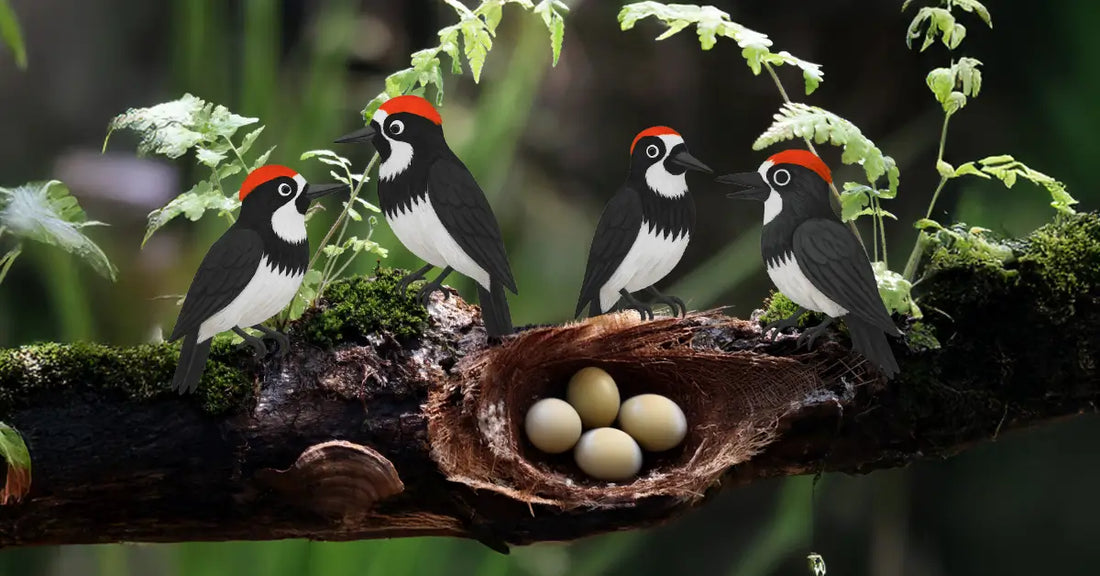Acorn Woodpeckers and the Power of Team Parenting

When you picture a bird family, you might imagine a pair that shares a territory and raises chicks together. Acorn Woodpeckers tell a different story. In oak savannas from Oregon to Colombia, many live in cooperative groups where several adults share a territory, defend food, and even share reproduction. A long-term study led by Sahas Barve at the Smithsonian National Museum of Natural History looked at what this strategy means over an entire lifetime. The results challenge old assumptions and make a strong case for teamwork.
What the study asked
Do birds that share mates actually leave fewer descendants, or can cooperation pay off when viewed across a whole life? The team used long-term, individually marked woodpeckers and genetic parentage to compare lifetime reproductive success in two situations: monogamous pairs, and cooperative groups where two or three same-sex adults share reproduction.
What the researchers found
Male Acorn Woodpeckers in cooperative duos or trios fathered more total offspring across their lives than males that bred as single pairs. On average, the lifetime total was about one and a half times higher, and cooperating males kept breeding for two to three extra years. Those extra seasons and extra nesting attempts add up.
What about females
The picture for females is more nuanced. Female duos produced about the same total number of young as solitary females when summed across a lifetime. Female trios produced fewer, on average, about two and a half fewer young. Group size and within-group competition matter for females more than for males in this system.
Why cooperation can still win
Sharing reproduction can dilute any one adult’s share in a given nest. The new analysis shows that cooperating males often offset those short-term losses with longer breeding careers and more total nesting attempts. In other words, lifetime accounting changes the answer. Cooperative strategies can provide direct evolutionary benefits, not only indirect benefits through helping relatives.
How these families work
Acorn Woodpecker society is famously complex. Groups can include two or three related males and one or two related females that share reproduction, plus grown offspring that stay to help feed young, defend the nest, and protect the acorn granary. Helpers often wait for a chance to become breeders in their natal woods or a neighboring territory.
Why this matters beyond woodpeckers
The study suggests that cooperation is not only a compromise forced by crowded habitats. Under the right conditions, it can pay off within a single lifetime. That insight helps explain how social behavior evolves and persists in many animals that rely on shared territories, shared food stores, or defense against rivals.



